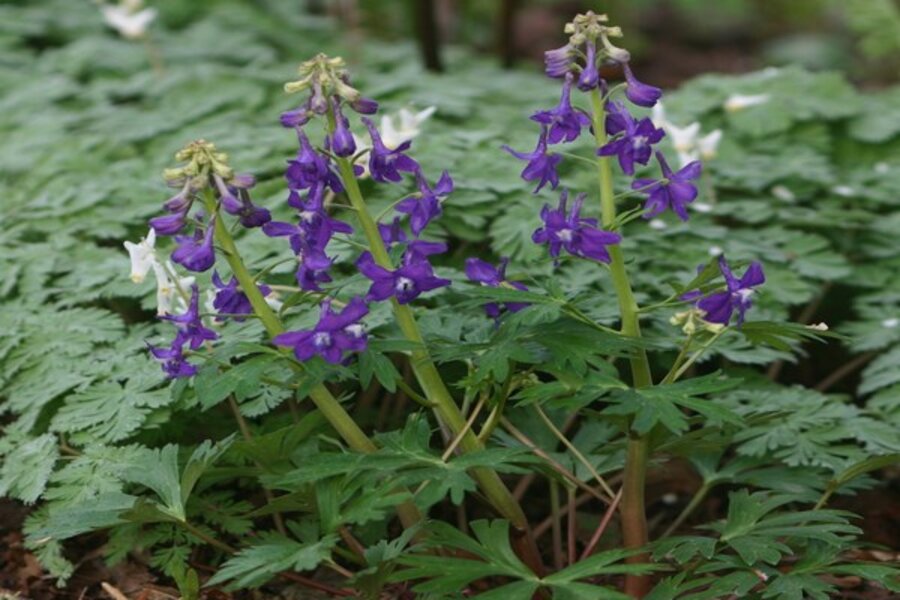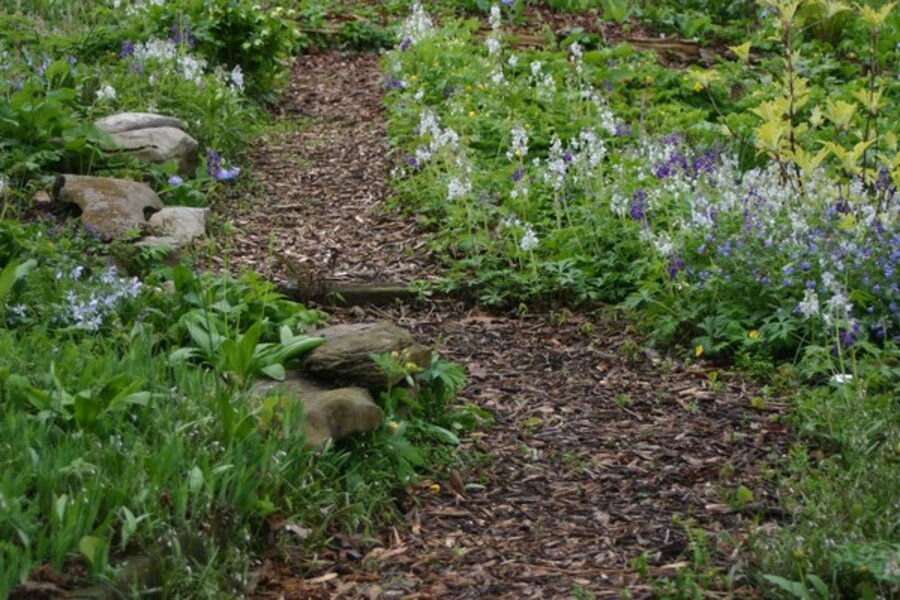Dwarf larkspur: an early, colorful wildflower
Loading...
Among the earliest of native wildflowers to grace my gardens is the dwarf larkspur (Delphinium tricorne). My start of this plant was obtained from the edge of a gravel country road where I was first captured by its color. That was over 15 years ago and anticipating the yearly emerging and bloom has now become similar to an anniversary date. I am always in my gardens the last week of March, into first week of April, watching for first signs of its appearance.
Short in height, tall on color
The dwarf larkspur stands about 12 to 14 inches when first coming into bloom. As the plant ages, the bloom stalk lengthens to reach a height of about 18 inches when well grown. Blooms open from the bottom up on the stems, and then a bit more space appears between each 1-inch blossom.
There are five petals with the top petal having a long spur resembling a witch's peaked hat. The center of the flower has a white fuzzy center resembling a bee seeking nectar. Bloom color is a generally a bright, rich purple, but color can vary in shades to gray-purple or lavender.
I have been fortunate to obtain the white blooming form for my gardens, and it is as reliable as the purple-blooming form.
As the blooms open, foliage appears at the base of the plant. Individual leaves are about four inches across, resembling the palm of your hand and deeply cut into sections.
Where it grows best
Dwarf larkspur is native from Canada to Florida, and from the base of the Rockies to the East Coast. It's quite hardy and very adaptable to home gardens.
I transplanted my plants to an environment similar to the conditions where I found the native ones growing. That is: edge of the woods environment where it receives plenty of spring sunshine, but is out of the afternoon sun. Soil is generally good woodland soil with humus, and there is an organic mulch. I use chopped leaves each November. If the dwarf larkspur has a good mulch to sow seed into, it will soon form drifts of color.
Delphinium tricorne is ephemeral, so as quickly as it comes up and blooms, it will fade away -- as leaves come out on trees and shrubs, robbing it of light and nutrients. I have several other ephemerals located with the dwarf larkspur, such as trilliums, Dicentra cucullaria (Dutchman's breeches), and Dicentra canadensis (a perennial know as squirrel corn).
These drifts are located between and beneath shrubs or larger perennials that will emerge as the ephemeral plants go dormant, taking their place in the garden. Ferns are always good choice as a companion to dwarf larkspur, as are Dicentra exima (bleeding heart) for later blooms and lacy foliage, Heuchera (alumroot and coral bells) for large colorful leaves, and Polygonatum (Solomon's seal) for height and grace.
-----
Gene Bush, a nationally known garden writer, photographer, lecturer, and nursery owner, gardens on a shaded hillside in southern Indiana. His website is www.munchkinnursery.com. He also writes the Garden Clippin's Newsletter. To read more by Gene here at Diggin' It, click here.








